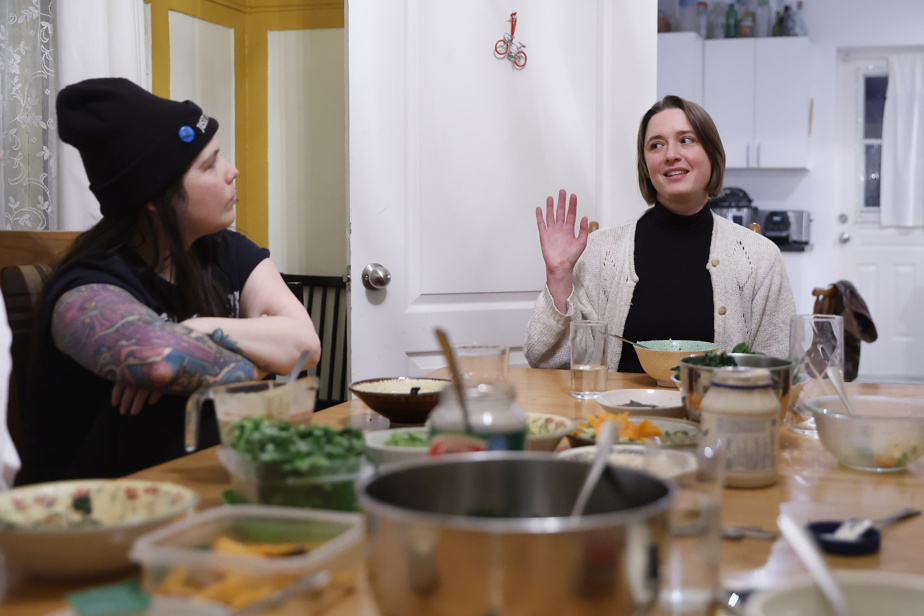“Since the dawn of time…we have lived together,” says freelance journalist Gabrielle Anctil. Or rather, we lived together. In Lodging at the same address, her first essay, she offers a reflection on collective life as a solution to the housing crisis, the ecological emergency and isolation.
Widespread throughout much of human history, community living saw its star fade with the popularization of the nuclear family model in the 1950s. The couple and their children were then placed at the heart of homes, then solo life exploded. In Canada, 4.4 million people lived alone in 2021, compared to 1.7 million in 1981.
“Living in community is certainly not a new idea,” writes the author. However, living in a community is today considered a funny idea. This funny idea, Gabrielle Anctil puts it into practice. For 14 years, she has lived in La Cafeteria, a community she co-founded with friends in her early twenties, in the Hochelaga-Maisonneuve district. Today, La Cafeteria brings together nine people in five apartments of a six-plex. All share the expenses (in proportion to their income) and take part in collective suppers organized regularly in the common kitchen, on the ground floor.
According to the Foundation for Intentional Community, it is “a group of people who have chosen to live together or share resources based on common values.” We can think of cohousing and ecovillages, different models from cooperatives or simple shared accommodation, and which are attracting growing interest in Quebec.
In this short essay, Gabrielle Anctil delves into the history of these communities and the solutions they can provide to various challenges facing society such as an aging population, the work of raising children, inequalities and the ecological crisis (the sharing of resources to reduce the footprint of a household).
Although the concept makes many people dream, it has its share of barriers and obstacles. As proof, only two co-housings have been created in Quebec, even if the projects are numerous.
And however attractive it may be for some, the idea of living together with strangers will certainly repel others. If the many references of writings and research produced on the subject prove to be convincing, the life inside different communities could have been told more.
However, the journalist is careful not to embellish the reality. But it offers, to those who would be tempted by the adventure, ways to live this living together well and calls for these communities to be given the means to multiply.
“Of course, living in a community requires many adaptations. We have to change various details of our way of life. But the distance to get there is much less than many people imagine. It is often enough to take the first step. »

